Edgar Allan Poe Through a Luciferian Lens
As a Luciferian witch, I walk a path that honors shadow as deeply as it honors light. In this journey, I’ve often found unexpected kindred spirits: artists, poets, and madmen who, knowingly or not, echo the spiritual truths of the Left-Hand Path. One such voice speaks louder than most: Edgar Allan Poe.
Poe wasn’t just a writer of macabre tales; he was a mystic of darkness, a seer of the soul’s decay and transformation. His stories are initiation rituals, exposing the mind to madness, guilt, death, and the forbidden knowledge that lies just beyond the veil of reason.
In this post, I invite you to explore Poe’s writing through the eyes of a Luciferian. Together, we’ll trace the symbols, themes, and archetypes that align Poe’s work with the Morning Star as a mirror of truth.
The Alchemy of the Abyss
In many of Poe’s stories, the protagonist is slowly (or suddenly) pulled into madness. Whether it’s the narrator of The Tell-Tale Heart, whose guilt becomes an auditory obsession, or Roderick Usher in The Fall of the House of Usher, whose very bloodline decays into ruin, this descent isn’t just horror. It’s transformation.
In Luciferianism, we do not fear the fall.
Madness in Poe’s world is initiation. Just as Lucifer fell from heaven and became something more, Poe’s characters fall from the illusions of normalcy into a deeper, darker awareness.
“And so being young and dipped in folly, I fell in love with melancholy.”
— Edgar Allan Poe
This “melancholy” is more than sadness, it’s the sacred gloom where we confront our true selves.
The Raven
Perhaps Poe’s most famous work, The Raven, is often seen as a tale of grief and madness, but it’s also a spiritual encounter.
The Raven, appearing at midnight, in the darkest part of the night, repeats only one word: “Nevermore.” At first glance, it seems a cruel message. But to a Luciferian, it carries profound meaning.
The Raven is a spirit guide, a dark archetype who does not offer false hope, but brutal truth. It doesn’t soothe the narrator. It doesn’t promise reunion or redemption. It reminds him, again and again, to let go of illusions.
“Deep into that darkness peering, long I stood there wondering, fearing, doubting...”
This is the perfect Luciferian stance.
The Mirror of Self
Poe’s characters are often haunted not by external forces, but by themselves.
In The Tell-Tale Heart, the narrator is consumed by guilt. He insists he is sane, but the relentless beating of the murdered man’s heart drives him to confession. This is a tale of confronting one’s inner daemon, the part of us that sees everything.
Luciferianism teaches us that there is no divine judge. We are our own reckoning. The heart’s beating is not a ghost. It is the awakened self, screaming to be heard.
Likewise, in William Wilson, the narrator is haunted by a double, a mirror image of himself who tries to restrain him from evil. This “double” is the inner watcher, the Higher Self, the daemon that calls us to accountability.
To walk the Luciferian path is to look directly into this mirror, and not flinch.
Death as Transformation
Poe’s obsession with death reflects a deeper truth. In Luciferianism, death is not the end, but a symbol of transformation.
Every time a Poe character descends, into a tomb, a crypt, a nightmare, they are undergoing symbolic death. They are burning away the false self.
In Ligeia, the narrator’s dead beloved rises again, possibly possessing the body of another woman. While eerie, this reflects the alchemical idea of spiritual rebirth: the soul reshaping itself through darkness.
Lucifer, too, is a being of death and resurrection, the light-bringer who walks through hellfire.
Was Poe a Luciferian? Probably not consciously. But through his writing, he echoed Luciferian truths.
That truth lies in the shadows. That madness can be a form of vision. That death, decay, and guilt are gates to power if faced honestly. That art can reveal what the church, the state, and polite society try to suppress.
In this way, Poe was a prophet of the shadow.
Poe’s stories are rituals of descent, and every descent is an opportunity for awakening. As Luciferians, we do not flee the tomb. We enter it willingly, knowing we will emerge as what we choose to become.
The Raven says “Nevermore” to free us.
With love,
xx Veronika
